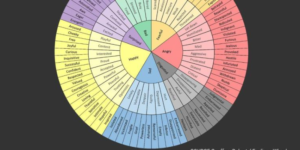The 4Ps of the marketing mix—Product, Price, Place, and Promotion—are fundamental tools for developing effective marketing strategies and business models. Originally conceptualised by Jerome McCarthy in 1960, this framework provides a structured approach to addressing marketing challenges (McCarthy, 1960). Since then, it has been widely adopted in marketing literature, textbooks, and business practices, guiding organisations in the development of successful marketing strategies. This article investigates each component of the 4Ps marketing mix framework, demonstrating its significance in contemporary marketing and how businesses can leverage it to maintain competitiveness in the marketplace.
1.0 Product
The first ‘P’ in the marketing mix is Product, which refers to the goods or services a business offers to its target market. A product is more than just a physical item; it encompasses a range of elements such as quality, design, branding, features, and the associated services, which collectively meet the needs of consumers (Kotler et al., 2017). In modern marketing practices, the focus has shifted from just creating products to designing products that offer value and solve specific problems.
In product development, companies must focus on both tangible and intangible attributes to appeal to their target audience. For instance, consumer behaviour studies have revealed that customers not only seek functional benefits but also emotional and psychological satisfaction from products (Solomon et al., 2019). Therefore, brands must ensure that they continually innovate to match consumer expectations and market trends.
Successful product strategies also consider the product life cycle, which includes the introduction, growth, maturity, and decline stages (Jobber & Ellis-Chadwick, 2020). Marketers need to adapt their strategies depending on the product’s life cycle stage to maintain its relevance. For example, during the introduction stage, promotional efforts will be more intensive to build awareness, while during the maturity stage, differentiation strategies may be emphasised to fend off competition.
2.0 Price
Price is the second element of the 4Ps and represents the amount of money consumers are willing to pay for a product. Price is critical because it directly influences profitability and market positioning. Setting an appropriate price requires a comprehensive understanding of market conditions, the cost of production, consumer perception of value, and competitors’ pricing strategies (Kotler & Armstrong, 2018).
There are various pricing strategies that businesses can employ, such as cost-plus pricing, competitive pricing, and value-based pricing. Cost-plus pricing involves setting a price by adding a specific percentage to the cost of producing the product, ensuring profitability (Brassington & Pettitt, 2013). Competitive pricing focuses on matching or undercutting the prices of competitors to attract price-sensitive customers. On the other hand, value-based pricing sets the price based on the perceived value of the product to the consumer, which can sometimes allow for premium pricing (Dibb et al., 2016).
In addition to selecting a pricing strategy, firms must consider price elasticity of demand, which measures the sensitivity of consumers to price changes (Kotler et al., 2017). Products with high price elasticity see a significant change in demand when prices fluctuate, while products with low price elasticity experience stable demand regardless of price variations. Luxury brands, for example, tend to exhibit low price elasticity because consumers are less price-sensitive due to the perceived value and status associated with the products (Solomon et al., 2019).
3.0 Place
Place, the third ‘P’, refers to how and where a product is made available to consumers. It involves decisions related to distribution channels, logistics, and retail locations. The main objective is to ensure that products are accessible to the target market in the right quantities and at the right time (Jobber & Ellis-Chadwick, 2020). Effective distribution strategies are essential for enhancing customer convenience and maximising sales opportunities.
Distribution strategies can vary from direct channels, where products are sold directly to consumers through online platforms or physical stores, to indirect channels involving intermediaries such as wholesalers and retailers (Brassington & Pettitt, 2013). The rise of e-commerce has transformed traditional distribution models, enabling businesses to reach a global audience with minimal physical infrastructure. Amazon, for instance, utilises a combination of online distribution and fulfilment centres to efficiently meet customer demands globally.
Furthermore, businesses must choose the appropriate level of distribution intensity, whether it be intensive, selective, or exclusive. Intensive distribution aims to make products available in as many outlets as possible, which is often suitable for convenience goods like soft drinks. Selective distribution limits the number of outlets to maintain a balance between exclusivity and accessibility, which is commonly used for electronics or fashion brands. Exclusive distribution, on the other hand, is limited to specific locations or retailers, typically for luxury or high-end products (Dibb et al., 2016).
Logistics also play a significant role in distribution, as efficient transportation and inventory management are vital for ensuring product availability while keeping costs in check (Kotler & Armstrong, 2018). Businesses must consider factors such as shipping times, warehousing, and inventory control to optimise their supply chain.
4.0 Promotion
Promotion is the final component of the marketing mix and is concerned with how businesses communicate with their target audience. The purpose of promotion is to inform, persuade, and remind consumers about the product and its benefits. Promotion strategies encompass advertising, public relations, sales promotions, personal selling, and digital marketing (Brassington & Pettitt, 2013).
In recent years, the rise of digital marketing has transformed promotional strategies. Social media platforms, search engine marketing, and email campaigns have become integral parts of promotion, enabling businesses to reach specific segments with targeted messages (Jobber & Ellis-Chadwick, 2020). Personalised advertising, in particular, allows businesses to engage with consumers on a more intimate level by tailoring messages to their preferences and behaviours (Kotler et al., 2017).
Traditional advertising methods, such as television and print media, still hold value, especially for mass-market products aiming for broad reach. However, integrating traditional and digital channels—known as omnichannel marketing—can enhance promotional effectiveness by delivering a consistent message across multiple touchpoints (Solomon et al., 2019).
Another important aspect of promotion is building a brand image. Consumers are often drawn to brands that represent values they identify with, such as sustainability, innovation, or social responsibility. Therefore, promotional efforts should not only focus on product features but also communicate the brand’s values and identity (Dibb et al., 2016).
The 4Ps—Product, Price, Place, and Promotion—remain a cornerstone of marketing strategy, providing businesses with a robust framework for delivering value to consumers and achieving competitive advantage. By carefully considering each of these elements, companies can design offerings that resonate with their target market, create a distinct positioning, and foster long-term customer relationships. As market conditions evolve, especially with technological advancements and changing consumer preferences, the 4Ps continue to adapt, proving their enduring relevance in the dynamic world of marketing.
References:
Brassington, F. & Pettitt, S. (2013) Essentials of Marketing. 3rd ed. Harlow: Pearson.
Dibb, S., Simkin, L., Pride, W.M. & Ferrell, O.C. (2016) Marketing Concepts and Strategies. 7th ed. Andover: Cengage Learning.
Jobber, D. & Ellis-Chadwick, F. (2020) Principles and Practice of Marketing. 9th ed. London: McGraw-Hill.
Kotler, P. & Armstrong, G. (2018) Principles of Marketing. 17th ed. Harlow: Pearson.
Kotler, P., Keller, K.L., Brady, M., Goodman, M. & Hansen, T. (2017) Marketing Management. 3rd ed. Harlow: Pearson.
McCarthy, E. J. (1960) Basic Marketing: A Managerial Approach. Homewood, IL: Irwin.
Solomon, M., Bamossy, G., Askegaard, S. & Hogg, M.K. (2019) Consumer Behaviour: A European Perspective. 7th ed. Harlow: Pearson.









